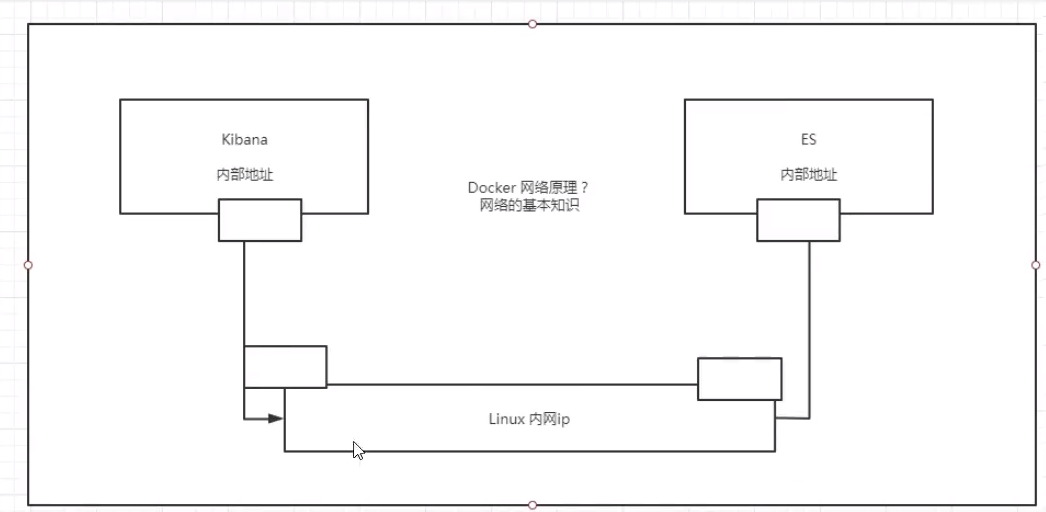reference resources
[crazy God talking about Java] Docker's latest super detailed tutorial is easy to understand
preface
Take notes and review later
Docker installation
Basic composition of Docker
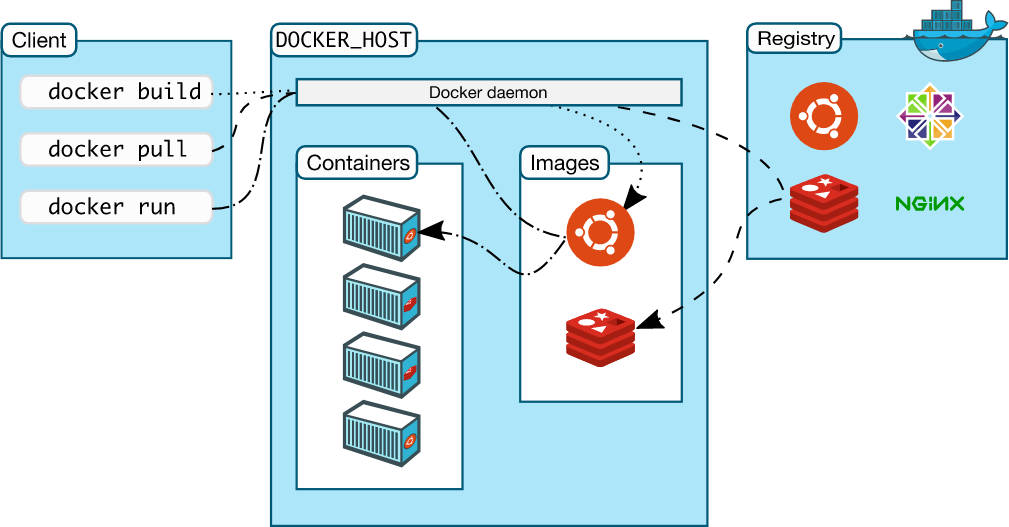
Image:
The Docker image is like a template, which can be used to create container services. The tomcat image - > Run - > tomacat01 container can be used to create multiple containers (the final service run or project run is in the container)
Container:
Docker uses container technology to run one or a group of references independently and create them through mirroring
Start, stop, delete, basic command
At present, this container can be understood as a simple linux system
Repository:
The warehouse is where the images are stored
Warehouses are divided into public warehouses and private warehouses
Docker hub (foreign by default)
Alicloud... All have container servers (configure image acceleration)
Docker installation
# 1. Uninstall the old version
sudo yum remove docker \
docker-client \
docker-client-latest \
docker-common \
docker-latest \
docker-latest-logrotate \
docker-logrotate \
docker-engine
# 2. Required installation package
sudo yum install -y yum-utils
# 3. Set image warehouse
sudo yum-config-manager \
--add-repo \
https://download.docker.com/linux/centos/docker-ce.repo # is from abroad by default, which is very slow
sudo yum-config-manager \
--add-repo \
http://mirrors.aliyun.com/docker-ce/linux/centos/docker-ce.repo # recommend Alibaba cloud
# 4. Update the yum software index (optional)
sudo yum makecache fast # centos7
sudo yum makecache # centos8
# centos 7 is OK. centos 8 j will report an error
# 5. Install docker engine docker CE community version ee enterprise version
# core client container
sudo yum install docker-ce docker-ce-cli containerd.io
# 6. View docker version

# 7. Start docker sudo systemctl start docker # 8. Verify whether docker engine is installed successfully sudo docker run hello-world # 9. View the downloaded Hello world image sudo docker images

Docker uninstall
# 1. Uninstall the installation package sudo yum remove docker-ce docker-ce-cli containerd.io # 2. Uninstall resources sudo rm -rf /var/lib/docker # Default working path of docker sudo rm -rf /var/lib/containerd
Configuring alicloud image acceleration
-
Find Alibaba cloud acceleration address
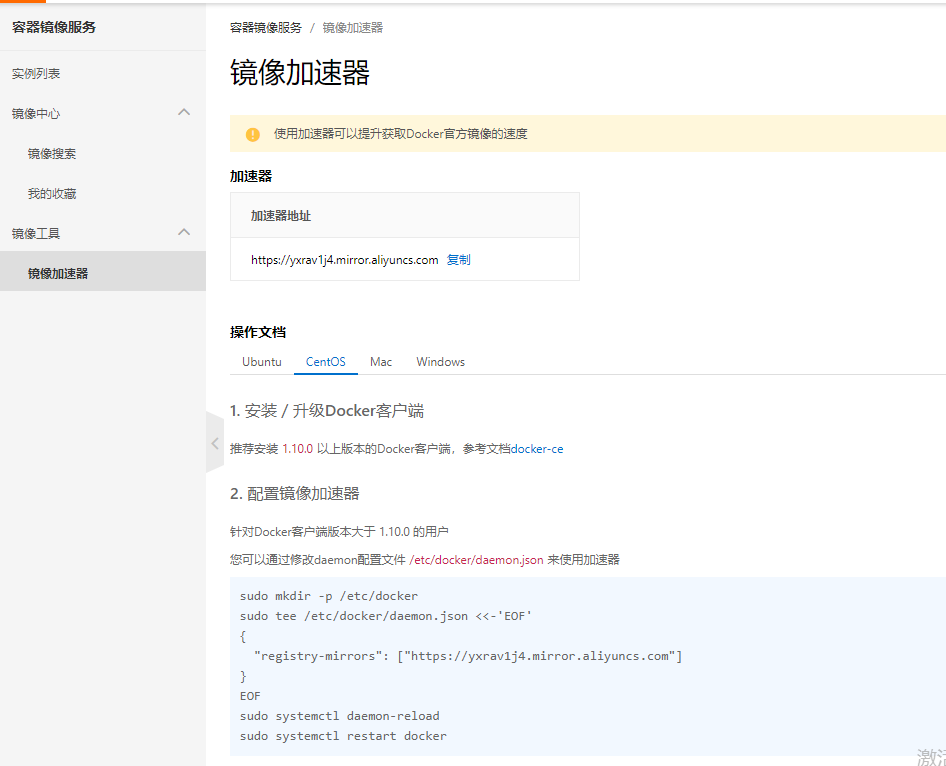
-
Configuration use
sudo mkdir -p /etc/docker sudo tee /etc/docker/daemon.json <<-'EOF' { "registry-mirrors": ["https://yxrav1j4.mirror.aliyuncs.com"] } EOF sudo systemctl daemon-reload sudo systemctl restart docker
Review the Hello world process
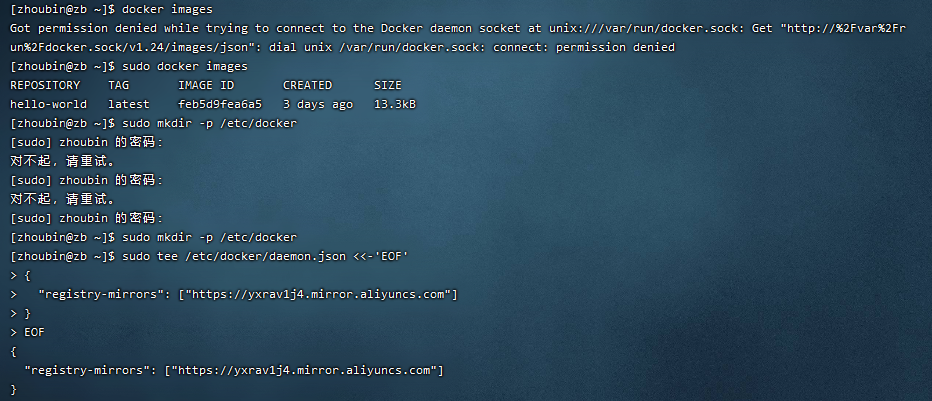

Underlying principle
What does Docker do?
Docker is a client server system. The daemon of docker runs on the host and is accessed from the client through the Socket
DockerServer will execute the docker client command after receiving it
[the external chain image transfer fails. The source station may have an anti-theft chain mechanism. It is recommended to save the image and upload it directly (img-cg0kah3m-1633015080651) (C: \ users \ ZB \ appdata \ roaming \ typora \ user images \ image-20210927160722927. PNG)]
Why is Docker faster than VM?
- Docker has fewer abstraction layers than virtual machines
- Docker uses the kernel of the host, and the VM requires the Guest OS
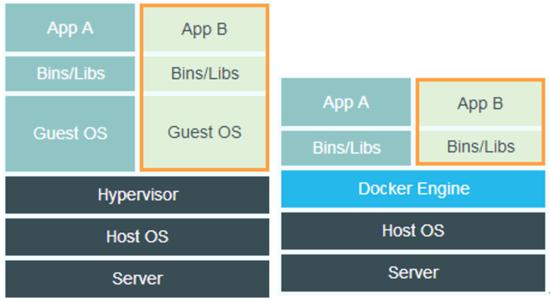
Common commands of Docker
Help command
docker version # Displays the version information of docker docker info # Displays the system information of docker, including the number of images and containers docker command --help # Help command
Address of help document: https://docs.docker.com/reference/
Mirror command
docker images view images on all local hosts
[root@zb zhoubin]# docker images
REPOSITORY TAG IMAGE ID CREATED SIZE
hello-world latest feb5d9fea6a5 3 days ago 13.3kB
# explain
REPOSITORY Mirrored warehouse source
TAG Mirrored label
IMAGE ID mirrored id
CREATED Creation time of the image
SIZE Mirror size
# Optional
-a, --all Show all images (default hides intermediate images)
--digests Show digests
-f, --filter filter Filter output based on conditions provided
--format string Pretty-print images using a Go template
--no-trunc Don't truncate output
-q, --quiet # Only the id of the mirror is displayed
docker search search image
[root@zb zhoubin]# docker search mysql
NAME DESCRIPTION STARS OFFICIAL AUTOMATED
mysql MySQL is a widely used, open-source relation... 11473 [OK]
mariadb MariaDB Server is a high performing open sou... 4356 [OK]
# Optional
-f, --filter filter Filter output based on conditions provided
--format string Pretty-print search using a Go template
--limit int Max number of search results (default 25)
--no-trunc Don't truncate output
# example
docker search mysql -f=STARS=3000 # Search for Stars greater than 3000
docker pull Download Image
# Download Image docker pull image name [: tag] [root@zb zhoubin]# docker pull mysql Using default tag: latest # If you do not write tag, the default is latest latest: Pulling from library/mysql a330b6cecb98: Pull complete # Layered download, the core federated file system of docker image 9c8f656c32b8: Pull complete 88e473c3f553: Pull complete 062463ea5d2f: Pull complete daf7e3bdf4b6: Pull complete 1839c0b7aac9: Pull complete cf0a0cfee6d0: Pull complete 1b42041bb11e: Pull complete 10459d86c7e6: Pull complete b7199599d5f9: Pull complete 1d6f51e17d45: Pull complete 50e0789bacad: Pull complete Digest: sha256:99e0989e7e3797cfbdb8d51a19d32c8d286dd8862794d01a547651a896bcf00c # Signature anti-counterfeiting mark Status: Downloaded newer image for mysql:latest docker.io/library/mysql:latest # Real address # Two equivalence docker pull mysql docker pull docker.io/library/mysql:latest # Image of the downloaded version docker pull mysql:5.7

docker rmi delete image
[root@zb zhoubin]# docker rmi -f image id # Deletes the specified mirror
[root@zb zhoubin]# docker rmi -f image id image id image id image id # Delete multiple mirrors
[root@zb zhoubin]# docker rmi -f $(docker images -aq) # Delete all mirrors
# Optional
-f, --force Force removal of the image
--no-prune Do not delete untagged parents
Container command
Only when you have an image can you create a container. Download a centos image to test learning
docker pull centos
docker run creates a new container and starts it
docker run [Optional parameters] image # Optional --name="Name" Container name, Used to distinguish containers -d Run in background mode -it Run interactively, Enter the container to view the contents -p Specifies the port of the container -p 8080:8080 -p ip:Host port:Container port -p Host port:Container port(Commonly used) -p Container port Container port -P Randomly assigned port # example # Start and enter the container [root@zb zhoubin]# docker run -it centos /bin/bash [root@af490be56050 /]# ls bin dev etc home lib lib64 lost+found media mnt opt proc root run sbin srv sys tmp usr var # Exit from container [root@af490be56050 /]# exit exit [root@zb /]# ls bin boot dev etc home lib lib64 media mnt opt proc root run sbin srv sys tmp usr var zhoubin
docker ps lists all running containers
[root@zb /]# docker ps
CONTAINER ID IMAGE COMMAND CREATED STATUS PORTS NAMES
[root@zb /]# docker ps -a
CONTAINER ID IMAGE COMMAND CREATED STATUS PORTS NAMES
af490be56050 centos "/bin/bash" 4 minutes ago Exited (0) 3 minutes ago infallible_mccarthy
f9456648c272 feb5d9fea6a5 "/hello" 2 hours ago Exited (0) 2 hours ago hungry_curran
# Optional
-a, --all Show all containers (default shows just running), Including historical operation
-f, --filter filter Filter output based on conditions provided
--format string Pretty-print containers using a Go template
-n, --last int Show n last created containers (includes all states) (default -1)
-l, --latest Show the latest created container (includes all states)
--no-trunc Don't truncate output
-q, --quiet # Displays only the number of the container
-s, --size Display total file sizes
Exit container
exit # Direct container stop and push out Ctrl + P + Q # The container does not stop exiting
docker rm delete container
docker rm container id # Delete the specified container. You cannot delete the running container. If you want to forcibly delete rm -f docker rm -f $(docker ps -aq) # Delete all containers docker ps -a -q|xargs docker rm # Delete all containers
Start and stop container operation
docker start container id # Start container docker restart container id # Restart container docker stop container id # Stop the currently running container docker kill container id # Force customization of the current container
Other commonly used commands
Background startup container
# Command docker run -d image name [root@zb /]# docker run -d centos # Problem: docker ps found centos stopped # Common pitfalls: when the docker container runs in the background, there must be a foreground process. If docker finds no reference, it will stop automatically # After the centos container starts, it will stop immediately if it finds that it does not provide services
docker logs view logs
docker logs [Optional parameters] container
# Optional
--details Show extra details provided to logs
-f, --follow Follow log output
--since string Show logs since timestamp (e.g. 2013-01-02T13:23:37Z) or relative (e.g. 42m for 42 minutes)
-n, --tail string Number of lines to show from the end of the logs (default "all")
-t, --timestamps Show timestamps
--until string Show logs before a timestamp (e.g. 2013-01-02T13:23:37Z) or relative (e.g. 42m for 42 minutes)
docker top often looks at the process information in the container
# Command docker top container id [root@zb /]# docker top fdcb4ce7d32c UID PID PPID C STIME TTY TIME CMD root 2049439 2049419 0 17:35 pts/0 00:00:00 /bin/bash
docker inspect view the source data of the image
# Command docker inspect container id
[root@zb /]# docker inspect fdcb4ce7d32c
[
{
"Id": "fdcb4ce7d32ce6d1c0024b8616b4cb7bd346458b7adf1e4be5364edd5033ee74",
"Created": "2021-09-27T09:35:55.474260558Z",
"Path": "/bin/bash",
"Args": [],
"State": {
"Status": "running",
"Running": true,
"Paused": false,
"Restarting": false,
"OOMKilled": false,
"Dead": false,
"Pid": 2049439,
"ExitCode": 0,
"Error": "",
"StartedAt": "2021-09-27T09:35:55.740878875Z",
"FinishedAt": "0001-01-01T00:00:00Z"
},
"Image": "sha256:5d0da3dc976460b72c77d94c8a1ad043720b0416bfc16c52c45d4847e53fadb6",
"ResolvConfPath": "/var/lib/docker/containers/fdcb4ce7d32ce6d1c0024b8616b4cb7bd346458b7adf1e4be5364edd5033ee74/resolv.conf",
"HostnamePath": "/var/lib/docker/containers/fdcb4ce7d32ce6d1c0024b8616b4cb7bd346458b7adf1e4be5364edd5033ee74/hostname",
"HostsPath": "/var/lib/docker/containers/fdcb4ce7d32ce6d1c0024b8616b4cb7bd346458b7adf1e4be5364edd5033ee74/hosts",
"LogPath": "/var/lib/docker/containers/fdcb4ce7d32ce6d1c0024b8616b4cb7bd346458b7adf1e4be5364edd5033ee74/fdcb4ce7d32ce6d1c0024b8616b4cb7bd346458b7adf1e4be5364edd5033ee74-json.log",
"Name": "/cranky_elbakyan",
"RestartCount": 0,
"Driver": "overlay2",
"Platform": "linux",
"MountLabel": "",
"ProcessLabel": "",
"AppArmorProfile": "",
"ExecIDs": null,
"HostConfig": {
"Binds": null,
"ContainerIDFile": "",
"LogConfig": {
"Type": "json-file",
"Config": {}
},
"NetworkMode": "default",
"PortBindings": {},
"RestartPolicy": {
"Name": "no",
"MaximumRetryCount": 0
},
"AutoRemove": false,
"VolumeDriver": "",
"VolumesFrom": null,
"CapAdd": null,
"CapDrop": null,
"CgroupnsMode": "host",
"Dns": [],
"DnsOptions": [],
"DnsSearch": [],
"ExtraHosts": null,
"GroupAdd": null,
"IpcMode": "private",
"Cgroup": "",
"Links": null,
"OomScoreAdj": 0,
"PidMode": "",
"Privileged": false,
"PublishAllPorts": false,
"ReadonlyRootfs": false,
"SecurityOpt": null,
"UTSMode": "",
"UsernsMode": "",
"ShmSize": 67108864,
"Runtime": "runc",
"ConsoleSize": [
0,
0
],
"Isolation": "",
"CpuShares": 0,
"Memory": 0,
"NanoCpus": 0,
"CgroupParent": "",
"BlkioWeight": 0,
"BlkioWeightDevice": [],
"BlkioDeviceReadBps": null,
"BlkioDeviceWriteBps": null,
"BlkioDeviceReadIOps": null,
"BlkioDeviceWriteIOps": null,
"CpuPeriod": 0,
"CpuQuota": 0,
"CpuRealtimePeriod": 0,
"CpuRealtimeRuntime": 0,
"CpusetCpus": "",
"CpusetMems": "",
"Devices": [],
"DeviceCgroupRules": null,
"DeviceRequests": null,
"KernelMemory": 0,
"KernelMemoryTCP": 0,
"MemoryReservation": 0,
"MemorySwap": 0,
"MemorySwappiness": null,
"OomKillDisable": false,
"PidsLimit": null,
"Ulimits": null,
"CpuCount": 0,
"CpuPercent": 0,
"IOMaximumIOps": 0,
"IOMaximumBandwidth": 0,
"MaskedPaths": [
"/proc/asound",
"/proc/acpi",
"/proc/kcore",
"/proc/keys",
"/proc/latency_stats",
"/proc/timer_list",
"/proc/timer_stats",
"/proc/sched_debug",
"/proc/scsi",
"/sys/firmware"
],
"ReadonlyPaths": [
"/proc/bus",
"/proc/fs",
"/proc/irq",
"/proc/sys",
"/proc/sysrq-trigger"
]
},
"GraphDriver": {
"Data": {
"LowerDir": "/var/lib/docker/overlay2/2546a273abe99c7335fbb03d67f8d380f743d91b6a47647231a4548967e23832-init/diff:/var/lib/docker/overlay2/ae442db66d110d0f4da98712944be8533e5c129299d4378bd8b50157e1715767/diff",
"MergedDir": "/var/lib/docker/overlay2/2546a273abe99c7335fbb03d67f8d380f743d91b6a47647231a4548967e23832/merged",
"UpperDir": "/var/lib/docker/overlay2/2546a273abe99c7335fbb03d67f8d380f743d91b6a47647231a4548967e23832/diff",
"WorkDir": "/var/lib/docker/overlay2/2546a273abe99c7335fbb03d67f8d380f743d91b6a47647231a4548967e23832/work"
},
"Name": "overlay2"
},
"Mounts": [],
"Config": {
"Hostname": "fdcb4ce7d32c",
"Domainname": "",
"User": "",
"AttachStdin": true,
"AttachStdout": true,
"AttachStderr": true,
"Tty": true,
"OpenStdin": true,
"StdinOnce": true,
"Env": [
"PATH=/usr/local/sbin:/usr/local/bin:/usr/sbin:/usr/bin:/sbin:/bin"
],
"Cmd": [
"/bin/bash"
],
"Image": "centos",
"Volumes": null,
"WorkingDir": "",
"Entrypoint": null,
"OnBuild": null,
"Labels": {
"org.label-schema.build-date": "20210915",
"org.label-schema.license": "GPLv2",
"org.label-schema.name": "CentOS Base Image",
"org.label-schema.schema-version": "1.0",
"org.label-schema.vendor": "CentOS"
}
},
"NetworkSettings": {
"Bridge": "",
"SandboxID": "7949bffe1d061e2cf0ea576114c80fc61f593d9ac8b33cc3b65823af443dc449",
"HairpinMode": false,
"LinkLocalIPv6Address": "",
"LinkLocalIPv6PrefixLen": 0,
"Ports": {},
"SandboxKey": "/var/run/docker/netns/7949bffe1d06",
"SecondaryIPAddresses": null,
"SecondaryIPv6Addresses": null,
"EndpointID": "1e0662f10c7915bee627d362cf5ec94a9a460a88ac4d17d7ce856e3fc2c5c94a",
"Gateway": "172.17.0.1",
"GlobalIPv6Address": "",
"GlobalIPv6PrefixLen": 0,
"IPAddress": "172.17.0.2",
"IPPrefixLen": 16,
"IPv6Gateway": "",
"MacAddress": "02:42:ac:11:00:02",
"Networks": {
"bridge": {
"IPAMConfig": null,
"Links": null,
"Aliases": null,
"NetworkID": "aa59f89e5467987caa069f8a0de56691ac5d953cdafb7b842287b0c8b3bc6d1e",
"EndpointID": "1e0662f10c7915bee627d362cf5ec94a9a460a88ac4d17d7ce856e3fc2c5c94a",
"Gateway": "172.17.0.1",
"IPAddress": "172.17.0.2",
"IPPrefixLen": 16,
"IPv6Gateway": "",
"GlobalIPv6Address": "",
"GlobalIPv6PrefixLen": 0,
"MacAddress": "02:42:ac:11:00:02",
"DriverOpts": null
}
}
}
}
]
Enter the currently running container
Usually, the container runs in the background mode. You need to enter the container and modify some configurations
Mode 1:
# command docker exec -it container id bashShell # example [root@zb /]# docker ps CONTAINER ID IMAGE COMMAND CREATED STATUS PORTS NAMES fdcb4ce7d32c centos "/bin/bash" 11 minutes ago Up 11 minutes cranky_elbakyan [root@zb /]# docker exec -it fdcb4ce7d32c /bin/bash [root@fdcb4ce7d32c /]# ls bin dev etc home lib lib64 lost+found media mnt opt proc root run sbin srv sys tmp usr var [root@fdcb4ce7d32c /]# ps -ef UID PID PPID C STIME TTY TIME CMD root 1 0 0 09:35 pts/0 00:00:00 /bin/bash root 15 0 0 09:47 pts/1 00:00:00 /bin/bash root 30 15 0 09:47 pts/1 00:00:00 ps -ef
Mode 2:
# command docker attach container id # example [root@zb /]# docker attach fdcb4ce7d32c Executing current code...
difference:
docker exec: after entering the container, open a new terminal where you can operate (commonly used)
docker attach: enter the terminal where the container is executing, and no new process will be started
docker cp copies files from the container to the host
#Command docker cp container id: path in container target host path [root@zb home]# docker ps CONTAINER ID IMAGE COMMAND CREATED STATUS PORTS NAMES 806a97d603e4 centos "/bin/bash" 3 minutes ago Up 2 minutes mystifying_leakey [root@zb home]# docker exec -it 806a97d603e4 /bin/bash [root@806a97d603e4 /]# cd /home [root@806a97d603e4 home]# ls [root@806a97d603e4 home]# touch text.cpp [root@806a97d603e4 home]# read escape sequence [root@zb home]# docker ps CONTAINER ID IMAGE COMMAND CREATED STATUS PORTS NAMES 806a97d603e4 centos "/bin/bash" 3 minutes ago Up 3 minutes mystifying_leakey [root@zb home]# ls test.java [root@zb home]# docker cp 806a97d603e4:/home/text.cpp /home [root@zb home]# ls test.java text.cpp # Copying is a manual process. In the future, we will use -v volume technology to realize automatic synchronization
Summary
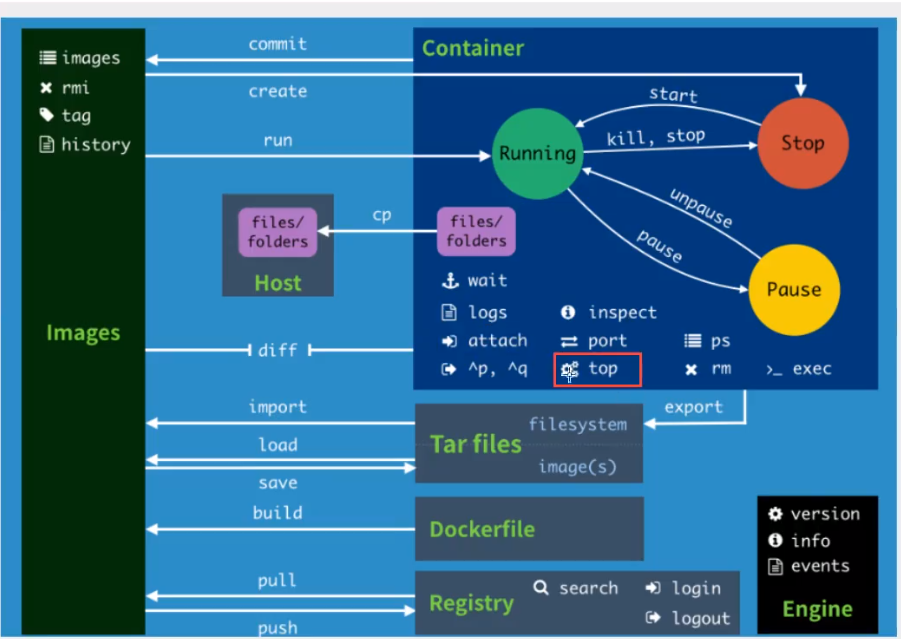
attach Attach local standard input, output, and error streams to a running container # The attach link under the current shell specifies the running image build Build an image from a Dockerfile # Customized image through Dockerfile commit Create a new image from a container's changes # Commit the current container as a new image cp Copy files/folders between a container and the local filesystem # Copy the specified file or directory from the container to the host create Create a new container # Create a new container, the same as run, but do not start the container diff Inspect changes to files or directories on a container's filesystem # View docker container changes events Get real time events from the server # Get container real-time events from docker service exec Run a command in a running container # Run the command on an existing container export Export a container's filesystem as a tar archive # Export the content stream of the container as a tar archive [corresponding to import] history Show the history of an image # Show a mirror formation history images List images # Lists the current image of the system import Import the contents from a tarball to create a filesystem image # Create a new file system image from the contents of the tar package [corresponding to export] info Display system-wide information # Display system related information inspect Return low-level information on Docker objects # View container details kill Kill one or more running containers # kill specifies the docker container load Load an image from a tar archive or STDIN # Load an image from a tar package [corresponding to save] login Log in to a Docker registry # Register or log in to a docker source server logout Log out from a Docker registry # From the current Docker registry logs Fetch the logs of a container # Output current container log information pause Pause all processes within one or more containers # Pause container port List port mappings or a specific mapping for the container # View the internal source port of the container corresponding to the mapped port ps List containers # List containers pull Pull an image or a repository from a registry # Pull the specified image or library image from the docker image source server push Push an image or a repository to a registry # Push the specified image or library image to the docker source server rename Rename a container restart Restart one or more containers # Restart the running container rm Remove one or more containers # Remove one or more containers rmi Remove one or more images # Remove one or more images [no container can be deleted without using the image, otherwise relevant containers need to be deleted before continuing or -f forced deletion] run Run a command in a new container # Create a new container and run a command save Save one or more images to a tar archive (streamed to STDOUT by default) # Save an image as a tar package [corresponding to load] search Search the Docker Hub for images # Search for images in docker hub start Start one or more stopped containers # Start container stats Display a live stream of container(s) resource usage statistics stop Stop one or more running containers # Stop container tag Create a tag TARGET_IMAGE that refers to SOURCE_IMAGE # Label images in source top Display the running processes of a container # View the process information running in the container unpause Unpause all processes within one or more containers # Unsuspend container update Update configuration of one or more containers version Show the Docker version information # View docker version number wait Block until one or more containers stop, then print their exit codes # Intercepts the exit status value when the container stops
visualization
-
Portal (use this first)
docker run -d -p 8088:9000 --restart=always -v /var/run/docker.sock:/var/run/docker.sock --privileged=true portainer/portianer
-
Rancher(CI/CD reuse)
What is a portal?
Docker graphical interface management tool provides a background panel for us to operate
docker run -d -p 8088:9000 --restart=always -v /var/run/docker.sock:/var/run/docker.sock --privileged=true portainer/portainer
Access test: http://120.55.42.144:8088/
Docker image explanation
What is mirroring
Image is a lightweight, executable independent software package used to package software developed by software running environment and opportunity running environment. It contains all the contents required to run a software, including code, runtime, library, environment variables and configuration files
All applications can run directly by directly packaging the docker image
How to get the image
- Download from remote warehouse
- Friend copy to you
- Make an image DockerFile by yourself
Docker image loading principle
Unionfs (Federated file system)
Union fs (Federated file system): Union file system (Union FS) is a layered, lightweight and high-performance file system. It supports the superposition of file system modifications from one submission to another. At the same time, it can mount different directories into a single virtual file system The union file system is the foundation of Docker image. The image can be inherited through layering. Based on the basic image (without parent image), various specific application images can be made
Features: multiple file systems can be loaded at the same time, but from the outside, only one file system can be seen. Joint loading will overlay all layers of file systems, so that the final file system will contain all underlying files and directories
Docker image loading principle
The image of docker is actually composed of a layer of file systems, such as UnionFS
bootfs(boot file system) mainly includes bootloader and kernel. Bootloader is mainly used to boot and load the kernel. Bootfs file system will be loaded when Linux starts. Bootfs is at the bottom of Docker image. This layer is the same as our classic Linux/Unix system, including boot loader and kernel. After boot loading, the whole kernel is in memory. At this time, the right to use memory has been transferred from bootfs to the kernel, and the system will also be written in bootfs
rootfs(root file system), above bootfs. It contains standard directories and files such as / dev,/proc,/bin,/etc in a typical Linux system. rootfs is a variety of operating system distributions, such as Ubuntu, Centos and so on
Usually, the CentOS installed into the virtual machine is several G, why is Docker only 200M?
For a streamlined OS, rootfs can be very small. It only needs to contain the most basic commands, tools and program libraries. Because the bottom layer directly uses the Host kernel, it only needs to provide rootfs. Therefore, for different linux distributions, bootf is basically always, and rootfs will be different, because different distributions can share bootfs
Hierarchical understanding
Tiered mirroring
We can download an image. We can see that it is downloaded layer by layer
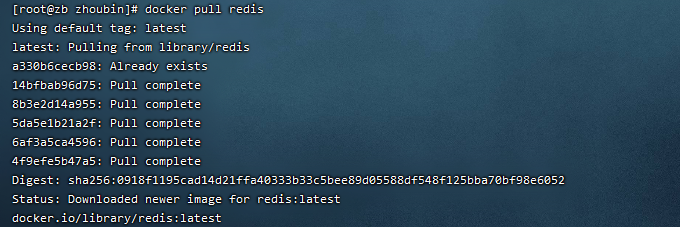
Why does the Docker image adopt this hierarchical structure?
The biggest advantage is resource sharing. For example, if multiple images are built from the same base image, the host only needs to keep one base image on the disk, and only one base image needs to be loaded into the colleague's memory, so that all containers can be served, and each layer of the image can be shared
You can view the image hierarchy through the docker image inspect command
[root@zb zhoubin]# docker image inspect redis:latest
[
// .....
"RootFS": {
"Type": "layers",
"Layers": [
"sha256:d000633a56813933cb0ac5ee3246cf7a4c0205db6290018a169d7cb096581046",
"sha256:bdad86443e47c5665683ac41c1f24f28479d830d7e3cc47d0a337ee5166c7714",
"sha256:6a7992ac480029d82b7dbb757d16fe5d023aa283ed32b52267cd1fe9e6b73c49",
"sha256:be43d2475cf809c0f2ec31950e849d0f888f3121970fd99196a11a903f8c3820",
"sha256:be5818ef2907adfe19be14bf66647b5fb5a2029143f9297f8ce1ff1fd1d35753",
"sha256:c54e0c16ea22fa873c12f6a7f3fb4e021bb58d67c292156a6ce6e08637458b7c"
]
},
"Metadata": {
"LastTagTime": "0001-01-01T00:00:00Z"
}
}
]
understand:
All Docker images start from a basic image layer. When modifying or adding new content, a new image layer will be created above the current image layer
For example, create a new image based on Ubuntu Linux 16.04, which is the first layer of the new image. If you add a Python package to the image, you will create a second image layer above the basic image layer. If you continue to add a security patch, you will create a third image layer
The mirror currently contains 3 mirror layers

While adding additional image layers, it is very important to understand that the image always remains the combination of all current images. The following figure gives a simple example. Each image layer contains 3 files, while the image contains 6 files of two image layers

The image layer in the above figure is slightly different from that in the previous figure. The main purpose is to facilitate the display of files
The following figure shows a slightly complex three-tier image. Externally, there are only 6 files in the entire image, because the top-level file 7 is an updated version of file 5
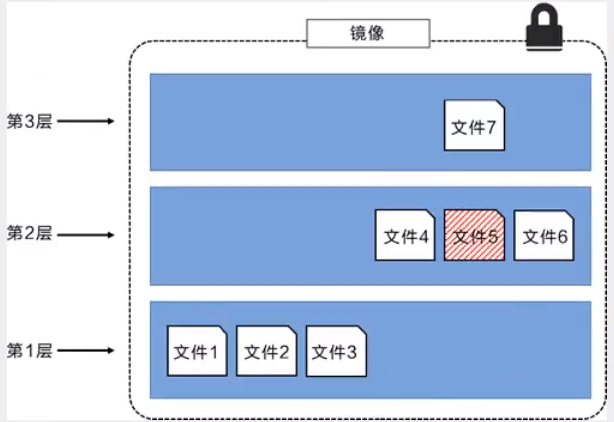
In this case, the files in the upper image layer cover the files in the lower image layer, so that the updated eight copies of the files are added to the image as a new image layer
Docker implements the image layer stack through the storage engine (the new version adopts the snapshot mechanism), and ensures that multiple image layers are displayed as a unified file system
The storage engines available on Linux include AUFS, Overlay2, Device Mapper, Btrfs and ZFS. As the name suggests, each storage engine is based on the corresponding file system or block device technology in Linux, and each storage engine has its unique performance characteristics
Docker only supports a storage engine of Windows filter on Windows. The engine is based on NTFS file system to realize layering and Cow[1]
The following figure shows the same three-layer mirror image as the system. All mirror layers are stacked and merged to provide a unified view

characteristic
Docker images are read-only. When the container is started, a new writable layer is loaded on the top of the image
This layer is what we usually call the container layer. What is under the container is called the mirror layer

Commit image
The docker commit submission container becomes a new copy
# The principle of the command is similar to that of git docker commit -m="Description information submitted" -a="author" container id Target image name:[TAG]
Actual test
# 1. Start a default tomcat # 2. It is found that the default tomcat does not have a webapps application. The reason for the image is that there are no files under the official image default webapps # 3. I copied in the basic files myself # 4. Submit the container we have operated to an image through commit

Container data volume
What is a container data volume
Review of Docker's concept
Package the application and environment into one image
Data. If the data is in the container, the container will be deleted and the data will be lost. Requirement: data can be persisted
Mysql, container deletion, database deletion and running requirements: MySQL data can be stored locally
Before the container, there can be a data sharing technology to synchronize the data generated in the Docker container to the local
This is volume technology, directory mounting. Mount the directory in our container to linux
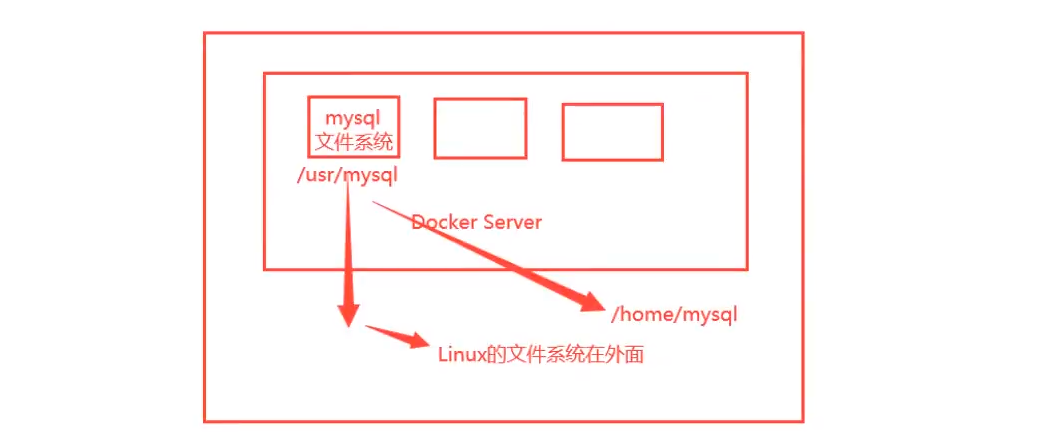
Summary: the persistence and synchronization of containers, and data sharing between containers
Using data volumes
Method 1: directly use the command to mount - v
docker run -it -v Host Directory:In container directory # test [root@zb home]# docker run -it -v /home/test:/home centos /bin/bash # After startup, inspect the container id through docker

Benefit: you only need to modify locally later
Actual combat: install mysql
Thinking: the problem of data persistence in MySQL
# Get image [root@zb test]# docker pull mysql:5.7 # Run container, Data mounting is required # To install and start mysql, you need to configure the password # Official test: docker run -- name some MySQL - e MySQL_ ROOT_ PASSWORD=my-secret-pw -d mysql:tag # mysql start [root@zb test]# docker run -d -p 3310:3306 -v /home/mysql/conf:/etc/mysql/conf.d -v /home/mysql/data:/var/lib/mysql -e MYSQL_ROOT_PASSWORD=123456 --name mysql01 mysql:5.7
Named and anonymous mount
# Anonymous mount
-v In container path
[root@zb data]# docker run -d -P --name nginx01 -v /etc/nginx/ nginx
de24b43780f17972c33f104d377c6fe19c9cdcf5b7a8f4db78f8f0596d76e304
# View all volume s
[root@zb data]# docker volume ls
DRIVER VOLUME NAME
local 19be477cd4e0b3b2822f7d00e18fd5179198d5e0dcd37354c8d8af26a32cb5b7
local a4f93cf8eb95af73bd61ac16ec45d0d69d7e240b368bbdd9e1c536d68e6a7aa0
# This is anonymous mount. In -v, only the path inside the container is written, and no path outside the container is written
# Named mount
[root@zb data]# docker run -d -P --name nginx02 -v juming-nginx:/etc/nginx nginx
35663552faf1b1a7661bb84a854f67c2e2e514d8daab79191f6cd331b13edb2e
[root@zb data]# docker volume ls
DRIVER VOLUME NAME
local 19be477cd4e0b3b2822f7d00e18fd5179198d5e0dcd37354c8d8af26a32cb5b7
local a4f93cf8eb95af73bd61ac16ec45d0d69d7e240b368bbdd9e1c536d68e6a7aa0
local juming-nginx
# Via -v volume name: path within container
# Take a look at this volume
[root@zb data]# docker volume inspect juming-nginx
[
{
"CreatedAt": "2021-09-29T10:01:57+08:00",
"Driver": "local",
"Labels": null,
"Mountpoint": "/var/lib/docker/volumes/juming-nginx/_data",
"Name": "juming-nginx",
"Options": null,
"Scope": "local"
}
]
All volumes in the docker container are in / var / lib / docker / volumes / xxx without a specified directory/_ data
Through named mount, we can easily find one of our volumes. In most cases, named mount is used
# How to determine whether a named mount or an anonymous mount or a specified path mount -v In container path # Anonymous mount -v Volume name:In container path # Named mount -v /Host path:In container path # Specified path mount
expand:
# ro rw changes the read and write permissions through the path in the -v container ro readonly # read-only rw readwrite # Readable and writable # Once the permission of the container is set, the container has restrictions on the mounted content docker run -d -P --name nginx02 -v juming-nginx:/etc/nginx:ro nginx docker run -d -P --name nginx02 -v juming-nginx:/etc/nginx:rw nginx # ro indicates that this path can only be changed by the host, and the container cannot be operated inside # The default is rw
First acquaintance with Dockerfile
Dockerfile is the build file and command script used to build docker image. Let's experience it
Through this script, you can generate an image. The image is layer by layer. The script commands one by one, and each command is a layer
# Create a Dockerfile. It is recommended to use Dockerfile # Content directive (uppercase) parameter in file FROM centos VOLUME ["volume01", "volume02"] CMD echo "---------end--------" CMD /bin/bash #Each command here is a layer of image
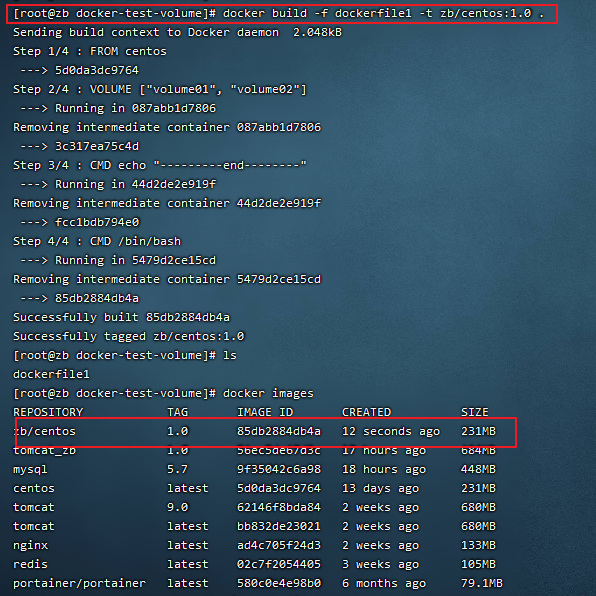
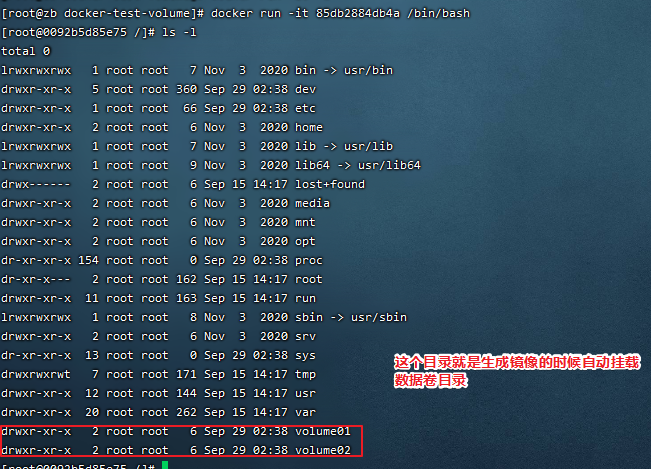
This volume must have a synchronized directory with the outside

View the path of the volume mount

Many will be used in the future and will build their own images
There is no mounted volume when building the image. You need to manually mount the image -v volume name: path in the container
Data volume container
Multiple mysql synchronization data

# Start 3 containers
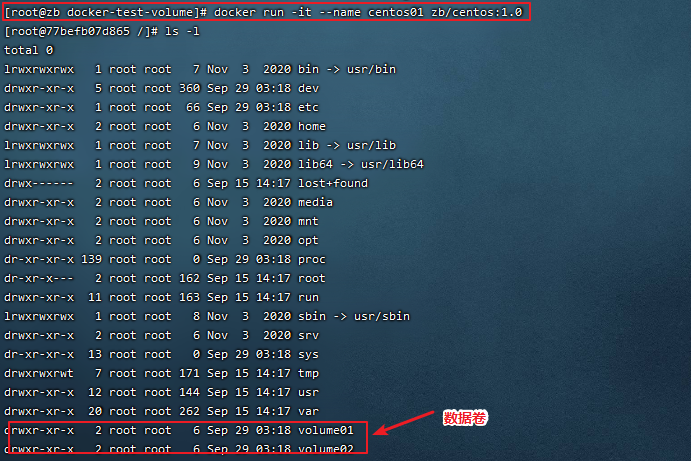
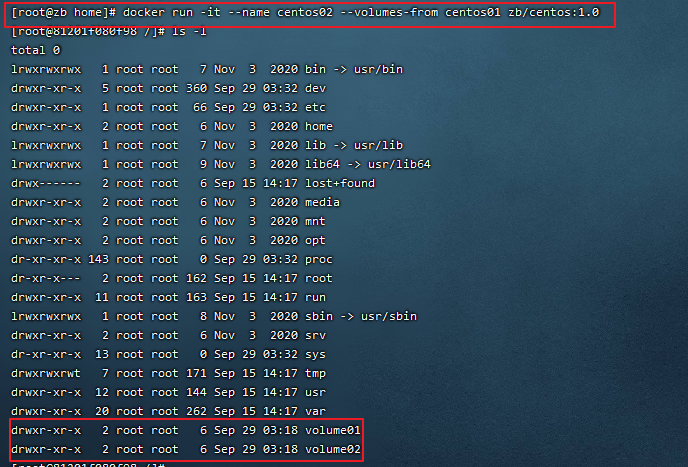
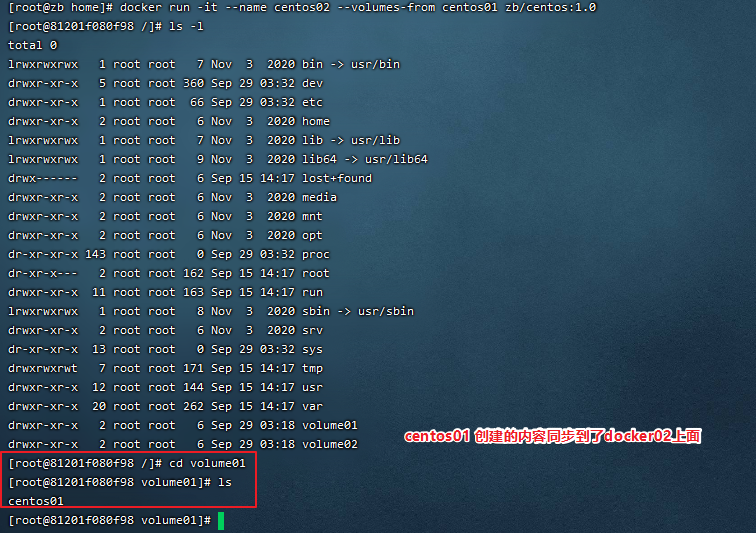

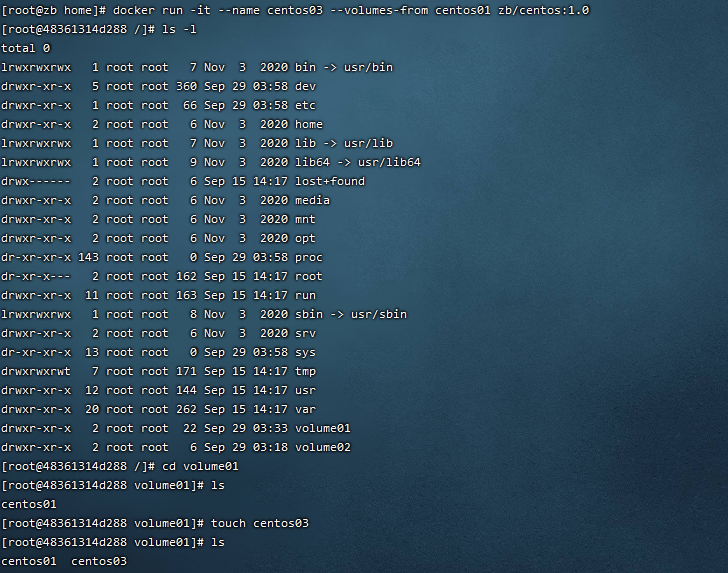
# Test, delete centos01, and check whether centos02 and centos03 can still access this file # The test is still accessible

Data sharing with multiple mysql
[root@zb test]# docker run -d -p 3310:3306 -v /home/mysql/conf:/etc/mysql/conf.d -v /home/mysql/data:/var/lib/mysql -e MYSQL_ROOT_PASSWORD=123456 --name mysql01 mysql:5.7 [root@zb test]# docker run -d -p 3310:3306 -e MYSQL_ROOT_PASSWORD=123456 --name mysql01 --volumes-from mysql01 mysql:5.7 # Data synchronization between two containers
Conclusion:
For the transfer of configuration information between containers, the life cycle of data volume containers continues until no containers are used
Once persisted locally, the local data will not be deleted
DockerFile
Docker construction introduction
dockerfile is used to build docker image files, command parameters and scripts
Construction steps:
- Write a dockerfile file
- docker build is called an image
- docker run run image
- docker push publishing images (DockerHub, Alibaba cloud image warehouse)
DockerFile construction process
Basics:
-
Each reserved keyword (instruction) must be an uppercase letter
-
Execute from top to bottom
-
/#Indicates a comment
-
Each instruction creates and commits a new mirror layer

Dockerfiles are development oriented. Projects should be published and mirrored
Steps: development, deployment and operation
DockerFile: build a file that defines all the steps
DockerImages: the image generated through DockerFile construction, and the product finally released and run. It was originally jar and war
Docker container: a container is an image that runs to provide a server
DockerFile instruction
FROM # Basic image, everything starts from here MAINTAINER # Who wrote the image, name + email RUN # Commands to run during image construction ADD # Step: tomcat image, this tomcat compressed package, and add content WORKDIR # Mirrored working directory VOLUME # Mount directory EXPOST # Exposed port configuration CMD # Specifies the command to run when the container is started. Only the last one will take effect and can be replaced ENTRYPOINT # Specify the fame and fortune to run when the container is started, and you can append commands ONBUILD # When an inherited DockerFile is built, the ONBUILD instruction will be run to trigger the instruction COPY # Similar to ADD, copy our files to the image ENV # Setting environment variables during construction
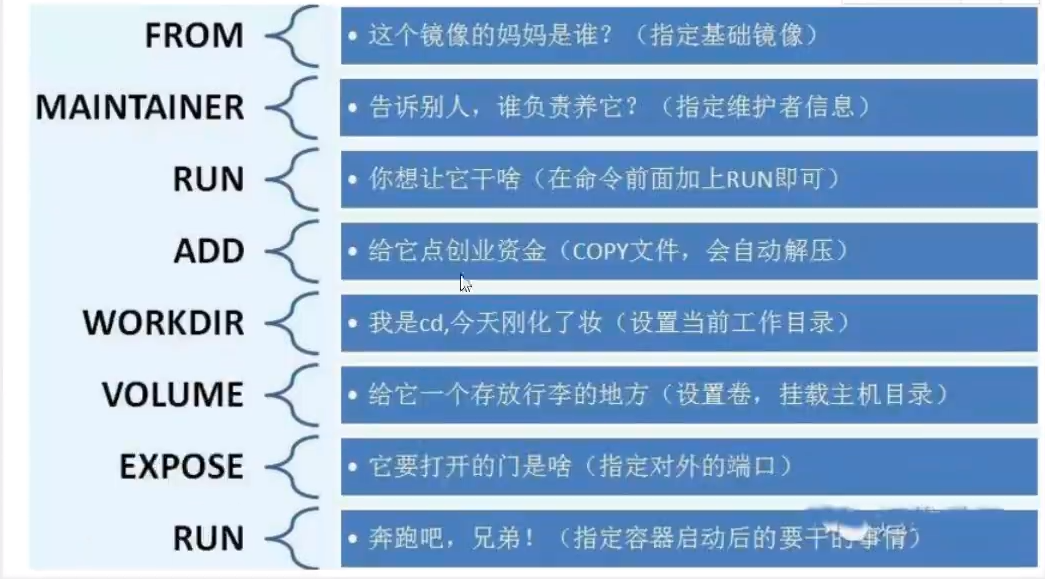
Actual test
99% of the images in the Docker Hub are built from this basic image, FROM scratch, and then configured with the required software and configuration
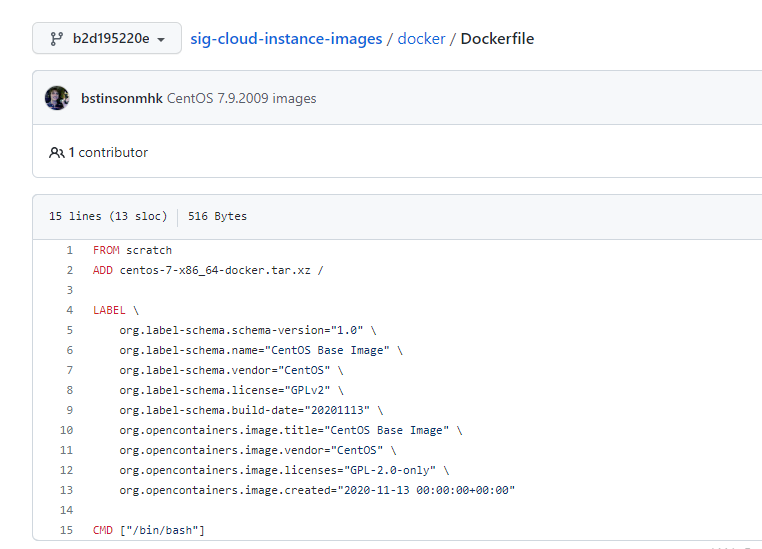
Create your own centos
# 1. Prepare Dockerfile file [root@zb docker-file]# cat mydockerfile FROM centos MAINTAINER zb<421830611@qq.com> ENV MYPATH /usr/local WORKDIR $MYPATH RUN yum -y install vim RUN yum -y install net-tools EXPOSE 80 CMD echo $MYPATH CMD echo "-----end---" CMD /bin/bash # 2. Build an image from this file # Command docker build -f dockerfile file path - t image name: [tag] [root@zb docker-file]# docker build -f mydockerfile -t mycentos:0.1 . # 3. Test run
Contrast: Previous native centos

We added the scene
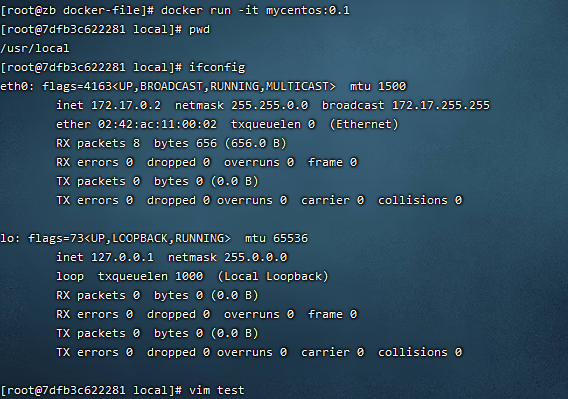
You can list the history of changes made locally
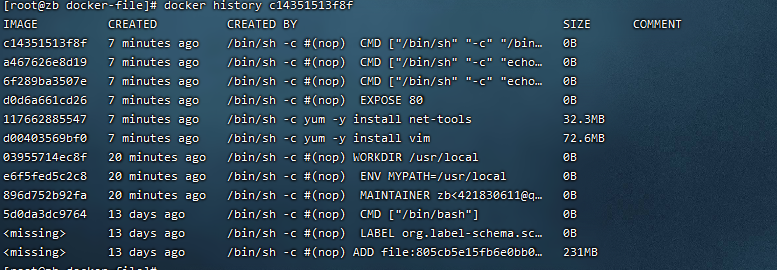
Difference between CMD and ENTRYPOINT
ENTRYPOINT # Specify the fame and fortune to run when the container is started, and you can append commands COPY # Similar to ADD, copy our files to the image
Test cmd
# Write dockerfile file [root@zb docker-file]# vim dockerfile-cmd-test FROM centos CMD ["ls", "-a"] # Build mirror [root@zb docker-file]# docker build -f dockerfile-cmd-test -t cmdtest . # run and find that the ls -a command takes effect [root@zb docker-file]# docker run 04f016b4925e . .. .dockerenv bin # Want to append a command - l, want to have la -al effect [root@zb docker-file]# docker run 04f016b4925e -l docker: Error response from daemon: OCI runtime create failed: container_linux.go:380: starting container process caused: exec: "-l": executable file not found in $PATH: unknown. ERRO[0000] error waiting for container: context canceled # cmd cleanup - l replaces CMD["ls", "-a"] command, - l is not a command, and an error is reported
Test ENTRYPOINT
# Write dockerfile file [root@zb docker-file]# vim dockefile-cmd-entrypoint FROM centos ENTRYPOINT ["ls", "-a"] # Build mirror [root@zb docker-file]# docker build -f dockefile-cmd-entrypoint -t entorypoint-test . Sending build context to Docker daemon 4.096kB Step 1/2 : FROM centos ---> 5d0da3dc9764 Step 2/2 : ENTRYPOINT ["ls", "-a"] ---> Running in ba2c39e2bfe3 Removing intermediate container ba2c39e2bfe3 ---> 488df2cac5a4 Successfully built 488df2cac5a4 Successfully tagged entorypoint-test:latest [root@zb docker-file]# docker run 488df2cac5a4 . .. .dockerenv bin dev etc home lib lib64 lost+found media mnt opt proc root run sbin srv sys tmp usr var # The append command is spliced directly after the ENTRYPOINT [root@zb docker-file]# docker run 488df2cac5a4 -l total 0 drwxr-xr-x 1 root root 6 Sep 29 07:19 . drwxr-xr-x 1 root root 6 Sep 29 07:19 .. -rwxr-xr-x 1 root root 0 Sep 29 07:19 .dockerenv lrwxrwxrwx 1 root root 7 Nov 3 2020 bin -> usr/bin drwxr-xr-x 5 root root 340 Sep 29 07:19 dev drwxr-xr-x 1 root root 66 Sep 29 07:19 etc drwxr-xr-x 2 root root 6 Nov 3 2020 home lrwxrwxrwx 1 root root 7 Nov 3 2020 lib -> usr/lib lrwxrwxrwx 1 root root 9 Nov 3 2020 lib64 -> usr/lib64 drwx------ 2 root root 6 Sep 15 14:17 lost+found drwxr-xr-x 2 root root 6 Nov 3 2020 media drwxr-xr-x 2 root root 6 Nov 3 2020 mnt drwxr-xr-x 2 root root 6 Nov 3 2020 opt dr-xr-xr-x 147 root root 0 Sep 29 07:19 proc dr-xr-x--- 2 root root 162 Sep 15 14:17 root drwxr-xr-x 11 root root 163 Sep 15 14:17 run lrwxrwxrwx 1 root root 8 Nov 3 2020 sbin -> usr/sbin drwxr-xr-x 2 root root 6 Nov 3 2020 srv dr-xr-xr-x 13 root root 0 Sep 29 07:19 sys drwxrwxrwt 7 root root 171 Sep 15 14:17 tmp drwxr-xr-x 12 root root 144 Sep 15 14:17 usr drwxr-xr-x 20 root root 262 Sep 15 14:17 var
Actual combat: tomcat image
-
Prepare the image file tomcat compressed package and jdk compressed package

-
Write a dockerfile file, which is officially named dockerfile. Build will automatically find this file without specifying - f
MAINTAINET zb<421830611@qq.com> COPY readme.txt /usr/local/readme.txt ADD jdk-8u11-linux-x64.tar.gz /usr/local/ ADD apache-tomcat-9.0.22.tar.gz /usr/local/ RUN yum -y install vim ENV MYPATH /usr/local WORKDIR $MYPATH ENV JAVA_HOME /usr/local/jdk1.8.0_11 ENV CLASSPATH $JAVA_HOME/lib/dt.jar:$JAVA_HOME/lib/tools.jar ENV CATLINA_HOME /usr/local/apache-tomcat-9.0.22 ENV CATLINA_PASH /usr/local/apache-tomcat-9.0.22 ENV PATH $PATH:$JAVA_HOME/bin:$CATALINA_HOME/lib:$CATALINA_HOME/bin EXPOSE 8080 CMD /usr/local/apache-tomcat-9.0.22/bin/startup.sh && tail -F /usr/local/apache-tomcat-9.0.22/logs/catalina.out
-
Build mirror
# docker build -t zbtomcat .
-
Start mirroring
[root@zb tomcat]# docker run -it -p 9090:8080 --name zbtomcat -v /tmp/tomcat/test:/usr/local/apache-tomcat-9.0.22/webapps/test -v /tmp/tomcat/tomcatlogs/:/usr/local/apache-tomcat-9.0.22/logs zbtomcat
-
Access test
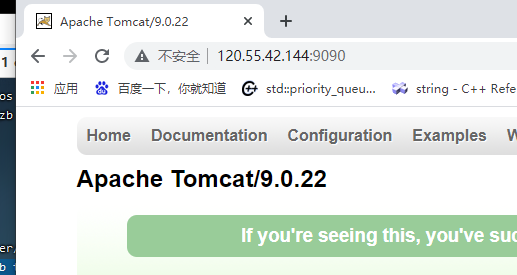
-
Publish the project (because the volume is mounted, you can publish the project directly by writing the project locally)
<?xml version="1.0" encoding="UTF-8"?> <web-app version="2.4" xmlns="http://java.sun.com/xml/ns/j2ee" xmlns:xsi="http://www.w3.org/2001/XMLSchema-instance" xsi:schemaLocation="http://java.sun.com/xml/ns/j2ee http://java.sun.com/xml/ns/j2ee/web-app_2_4.xsd"> </web-app><%@ page language="java" contentType="text/html; charset=UTF-8" pageEncoding="UTF-8"%> <!DOCTYPE html> <html> <head> <meta charset="utf-8"> <title>hello</title> </head> <body> Hello World!<br/> <% System.out.println("------my test web logs -----"); %> </body> </html>
Publish your own image
DockerHub
-
address https://hub.docker.com/ Register your account
-
Make sure this account can log in
-
Commit your own image on the server
[root@zb zhoubin]# docker login --help Usage: docker login [OPTIONS] [SERVER] Log in to a Docker registry. If no server is specified, the default is defined by the daemon. Options: -p, --password string Password --password-stdin Take the password from stdin -u, --username string Username [root@zb zhoubin]# docker login -u zzbbzb Password: WARNING! Your password will be stored unencrypted in /root/.docker/config.json. Configure a credential helper to remove this warning. See https://docs.docker.com/engine/reference/commandline/login/#credentials-store Login Succeeded -
After logging in, you can submit the image, which is a one-step docker push
# push your own image to the server [root@zb zhoubin]# docker push zbtomcat Using default tag: latest The push refers to repository [docker.io/library/zbtomcat] 606a9fcc1aa2: Preparing 2580ff04a607: Preparing 255d8e8398a5: Preparing e7d27dc20f3e: Preparing 74ddd0ec08fa: Preparing denied: requested access to the resource is denied # refuse # Mirror problem? [root@zb zhoubin]# docker push zb/zbtomcat:1.0 The push refers to repository [docker.io/zb/zbtomcat] An image does not exist locally with the tag: zb/zbtomcat # Processing, add tag, user name / image name: tag [root@zb tomcat]# docker tag a42188e7ed03 zzbbzb/zbtomcat:1.0 [root@zb tomcat]# docker images REPOSITORY TAG IMAGE ID CREATED SIZE zbtomcat latest a42188e7ed03 2 minutes ago 643MB zzbbzb/zbtomcat 1.0 a42188e7ed03 2 minutes ago 643MB entorypoint-test latest 488df2cac5a4 31 hours ago 231MB cmdtest latest 04f016b4925e 31 hours ago 231MB mycentos 0.1 c14351513f8f 32 hours ago 336MB zb/centos 1.0 85db2884db4a 36 hours ago 231MB tomcat_zb 1.0 56ec5de67d3c 2 days ago 684MB mysql 5.7 9f35042c6a98 2 days ago 448MB centos latest 5d0da3dc9764 2 weeks ago 231MB tomcat 9.0 62146f8bda84 2 weeks ago 680MB tomcat latest bb832de23021 2 weeks ago 680MB nginx latest ad4c705f24d3 2 weeks ago 133MB redis latest 02c7f2054405 3 weeks ago 105MB portainer/portainer latest 580c0e4e98b0 6 months ago 79.1MB # docker push up [root@zb tomcat]# docker push zzbbzb/zbtomcat:1.0 The push refers to repository [docker.io/zzbbzb/zbtomcat] d2d29553047a: Pushing [=> ] 1.66MB/72.56MB beb0f6e2950e: Pushing [====> ] 1.361MB/15.41MB 1c2f3be1f20c: Pushing [> ] 1.594MB/324MB 4b5e8fca88ed: Pushed 74ddd0ec08fa: Pushing [> ] 2.196MB/231.3MB
Alicloud image
-
Log in to alicloud
-
Container mirroring service found
-
Create namespace

-
Create container image

-
Browse alicloud documents
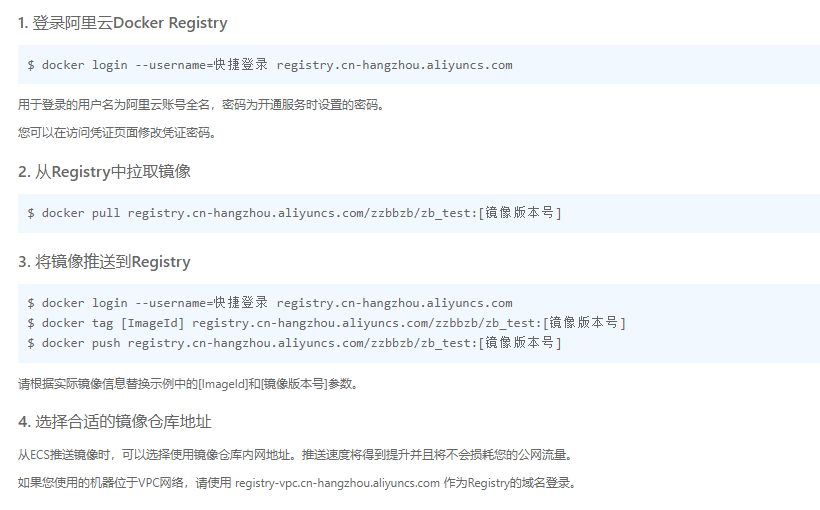
Summary

Docker network (bedding container arrangement cluster deployment)
Understand Docker0
Empty all images and containers
test
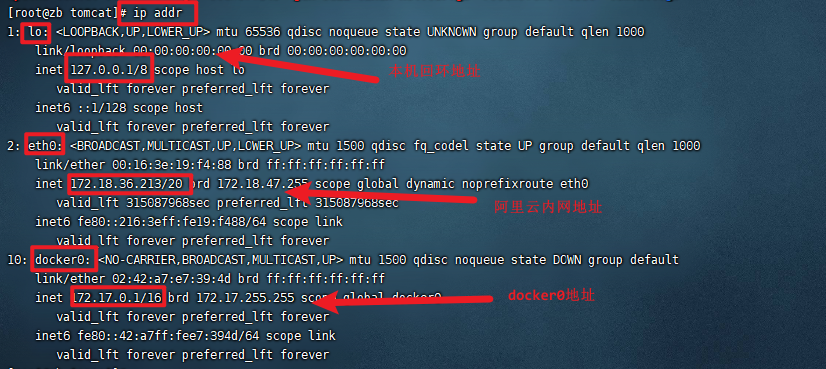
Three networks
# How does docker handle container network access?

# [root@zb /]# docker run -d -P --name tomcat01 tomcat
# Check the internal network address ip addr of the container and find that you will get an IP address when the container is started eth0@if116 ip address, assigned by docker
[root@zb tomcat]# docker exec -it tomcat01 ip addr
1: lo: <LOOPBACK,UP,LOWER_UP> mtu 65536 qdisc noqueue state UNKNOWN group default qlen 1000
link/loopback 00:00:00:00:00:00 brd 00:00:00:00:00:00
inet 127.0.0.1/8 scope host lo
valid_lft forever preferred_lft forever
115: eth0@if116: <BROADCAST,MULTICAST,UP,LOWER_UP> mtu 1500 qdisc noqueue state UP group default
link/ether 02:42:ac:11:00:02 brd ff:ff:ff:ff:ff:ff link-netnsid 0
inet 172.17.0.2/16 brd 172.17.255.255 scope global eth0
valid_lft forever preferred_lft forever
# Can linux ping the container
[root@zb tomcat]# ping 172.17.0.2
PING 172.17.0.2 (172.17.0.2) 56(84) bytes of data.
64 bytes from 172.17.0.2: icmp_seq=1 ttl=64 time=0.084 ms
64 bytes from 172.17.0.2: icmp_seq=2 ttl=64 time=0.039 ms
64 bytes from 172.17.0.2: icmp_seq=3 ttl=64 time=0.047 ms
64 bytes from 172.17.0.2: icmp_seq=4 ttl=64 time=0.044 ms
# linux can ping through the docker container
principle
- Every time a docker container is started, docker will assign an ip to the docker container. As long as docker is installed, there will be a network card docker0 bridging mode. The technology used is Veth pair technology
Test ip addr again
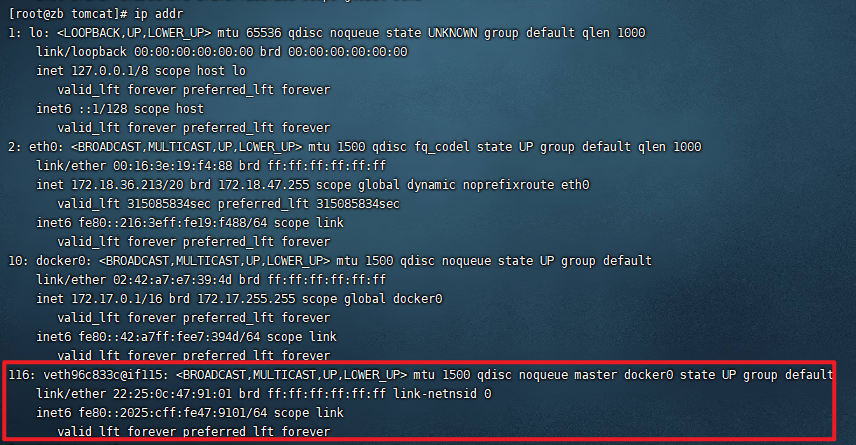
- Start another test and find another network card
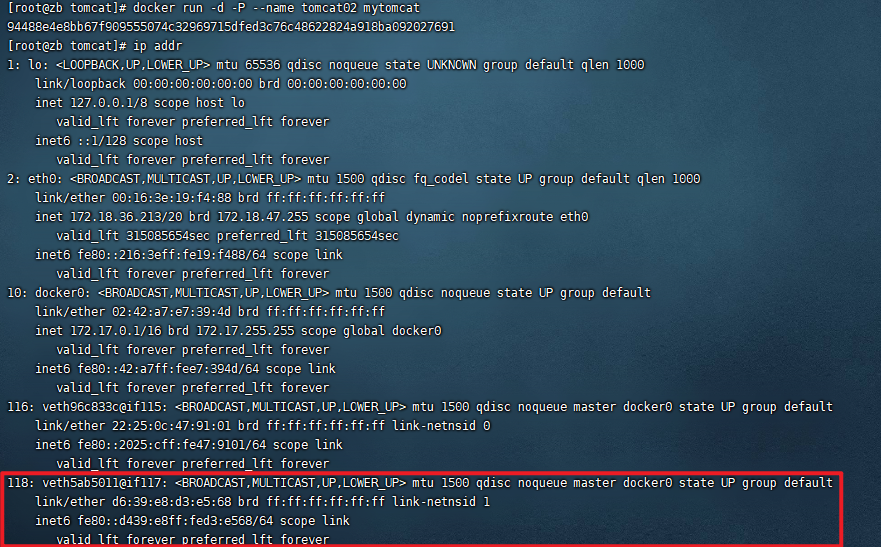
# We found that the network cards brought by this container are a pair # Veth pair is a pair of virtual device interfaces, which appear in pairs, one connected to the protocol and the other connected to each other # With this feature, Veth pair acts as a bridge to link various virtual network devices # The links between OpenStac, Docker containers and ovs all use Veth pair technology
-
Test whether tomcat01 and tomcat02 can be ping ed
[root@zb tomcat]# docker exec -it tomcat02 ping 172.17.0.1 PING 172.17.0.1 (172.17.0.1) 56(84) bytes of data. 64 bytes from 172.17.0.1: icmp_seq=1 ttl=64 time=0.075 ms 64 bytes from 172.17.0.1: icmp_seq=2 ttl=64 time=0.051 ms # Conclusion: containers and containers can ping each other
Draw a network model diagram:
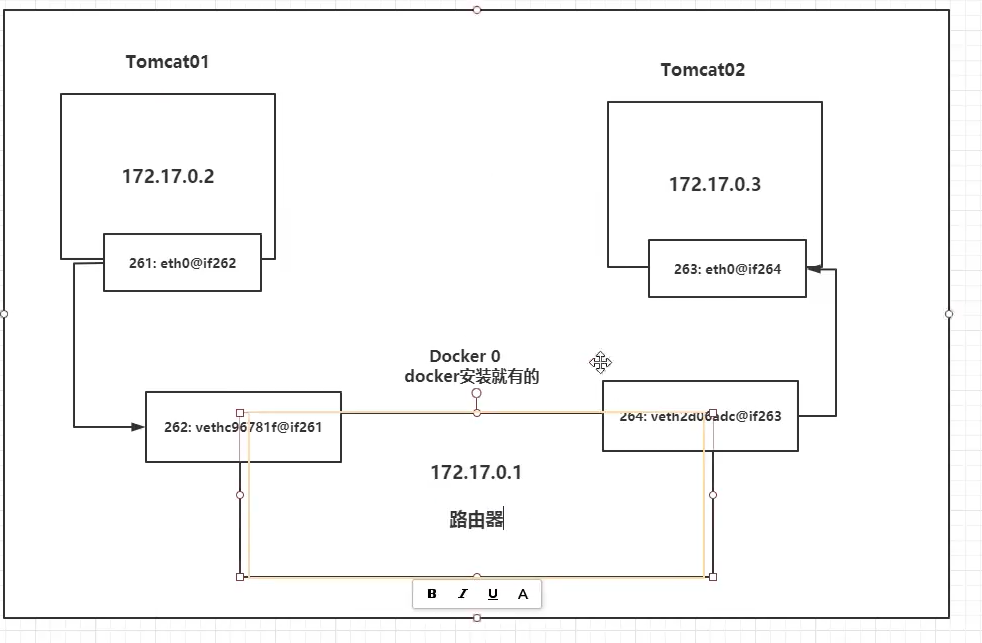
Conclusion: tomcat01 and tomcat02 are common routers docker0
When all containers do not specify a network, they are routed by docker0. Docker will assign a default available ip address to our container
Summary
Docker uses LInux bridge, and the host computer is a docker container bridge docker0
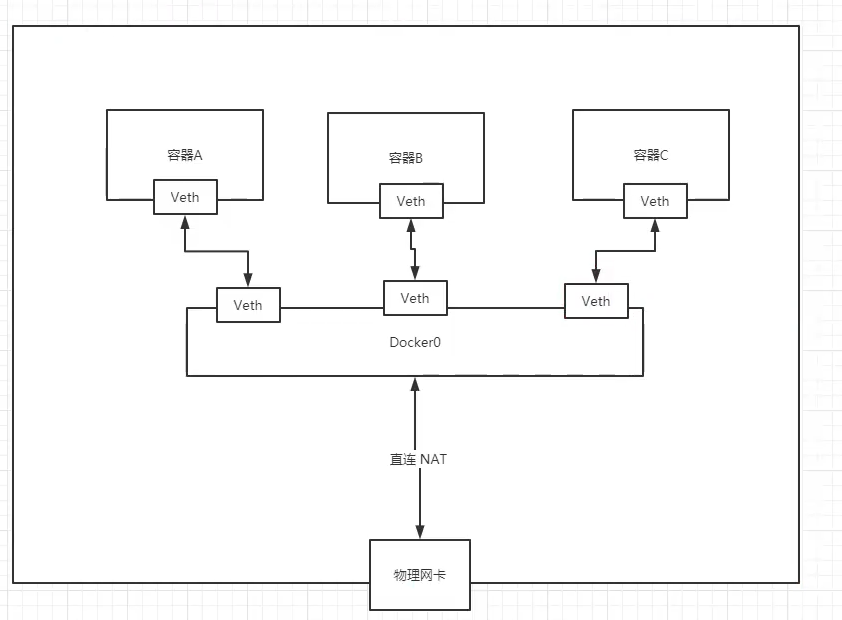
All network interfaces in Docker are virtual, and virtual forwarding efficiency is high
As long as the container is deleted, the corresponding pair of bridges will disappear
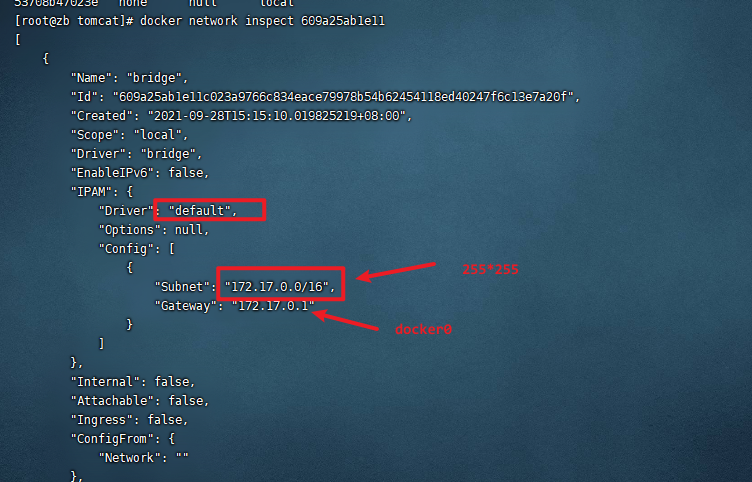
–link
Consider a scenario where the project does not restart, the database ip is changed, and the container can be accessed by name
[root@zb tomcat]# docker exec -it tomcat02 ping tomcat01 ping: tomcat01: Name or service not known # How to solve # The problem of network connectivity can be solved through -- link [root@zb tomcat]# docker run -d -P --name tomcat03 --link tomcat02 mytomcat a513374a099c59c789df5c3a5cd2c65a4a3558ff0b4e2fc93ce02ed5bf9f9ce5 [root@zb tomcat]# docker exec -it tomcat03 ping tomcat02 PING tomcat02 (172.17.0.3) 56(84) bytes of data. 64 bytes from tomcat02 (172.17.0.3): icmp_seq=1 ttl=64 time=0.076 ms 64 bytes from tomcat02 (172.17.0.3): icmp_seq=2 ttl=64 time=0.071 ms 64 bytes from tomcat02 (172.17.0.3): icmp_seq=3 ttl=64 time=0.076 ms 64 bytes from tomcat02 (172.17.0.3): icmp_seq=4 ttl=64 time=0.057 ms 64 bytes from tomcat02 (172.17.0.3): icmp_seq=5 ttl=64 time=0.045 ms 64 bytes from tomcat02 (172.17.0.3): icmp_seq=6 ttl=64 time=0.057 ms 64 bytes from tomcat02 (172.17.0.3): icmp_seq=7 ttl=64 time=0.055 ms --- tomcat02 ping statistics --- 7 packets transmitted, 7 received, 0% packet loss, time 6121ms rtt min/avg/max/mdev = 0.045/0.062/0.076/0.013 ms # Can you ping the direction [root@zb tomcat]# docker exec -it tomcat02 ping tomcat03 ping: tomcat03: Name or service not known
Probe: inspect

In fact, tomcat03 is configured locally with tomcat02 configuration
# View host configuration [root@zb tomcat]# docker exec -it tomcat03 cat /etc/hosts 127.0.0.1 localhost ::1 localhost ip6-localhost ip6-loopback fe00::0 ip6-localnet ff00::0 ip6-mcastprefix ff02::1 ip6-allnodes ff02::2 ip6-allrouters 172.17.0.3 tomcat02 94488e4e8bb6 172.17.0.4 a513374a099c
Essential exploration: - link is to add 172.17.0.3 tomcat02 94488e4e8bb6 to the hosts configuration
Now play what Docker doesn't recommend – link
Custom network without docker0
docker0 problem: container name link access is not supported
Custom network
View all docker networks

Network mode
Bridge: bridge mode docker0 (by default, birdge mode is also applicable for self creation)
none: do not configure network
Host: share network with host
Container: container network connectivity (less used)
test
# The command we started directly -- net bridge, this is our docker0 docker run -d -P --name tomcat01 mytomcat docker run -d -P --name tomcat01 --net bridge mytomcat # docker0 features: the default domain name cannot be accessed, - link can open the connection # Customize a network # --driver bridge # --subnet 192.168.0.0/16 192.168.0.2 192.168.255.255 # --gateway 192.168.0.1 [root@zb tomcat]# docker network create --driver bridge --subnet 192.168.0.0/16 --gateway 192.168.0.1 mynet 84219c18de814d86d92b12f51a3c5df4786ee92531c7c26f0516574c8e002648 [root@zb tomcat]# docker network ls NETWORK ID NAME DRIVER SCOPE 609a25ab1e11 bridge bridge local d0a1cdd793b6 host host local 84219c18de81 mynet bridge local
Your own network will be created

[root@zb tomcat]# docker network inspect mynet
[
{
"Name": "mynet",
"Id": "84219c18de814d86d92b12f51a3c5df4786ee92531c7c26f0516574c8e002648",
"Created": "2021-10-01T19:49:51.739326047+08:00",
"Scope": "local",
"Driver": "bridge",
"EnableIPv6": false,
"IPAM": {
"Driver": "default",
"Options": {},
"Config": [
{
"Subnet": "192.168.0.0/16",
"Gateway": "192.168.0.1"
}
]
},
"Internal": false,
"Attachable": false,
"Ingress": false,
"ConfigFrom": {
"Network": ""
},
"ConfigOnly": false,
"Containers": {
"88451c50139b7134879879aba1c29fc10c52b5aaa2828bc8050591375e9a7a17": {
"Name": "tomcat_net_02",
"EndpointID": "5ef468aca35753f6ed899e817adbe1ccd6cc1376224208028f77585ef2ec09aa",
"MacAddress": "02:42:c0:a8:00:03",
"IPv4Address": "192.168.0.3/16",
"IPv6Address": ""
},
"9caf86f431f3fa336f5da303c4c6d2ae48d579b779457f8b282d1d5abbaa459b": {
"Name": "tomcat_net_01",
"EndpointID": "8b55ac78dd05ee2832932a3fe512985c33545c665016d12db102bace6ac6f964",
"MacAddress": "02:42:c0:a8:00:02",
"IPv4Address": "192.168.0.2/16",
"IPv6Address": ""
}
},
"Options": {},
"Labels": {}
# Test the ping link again
[root@zb tomcat]# docker exec -it tomcat_net_01 ping 192.168.0.3
PING 192.168.0.3 (192.168.0.3) 56(84) bytes of data.
64 bytes from 192.168.0.3: icmp_seq=1 ttl=64 time=0.107 ms
64 bytes from 192.168.0.3: icmp_seq=2 ttl=64 time=0.072 ms
--- 192.168.0.3 ping statistics ---
2 packets transmitted, 2 received, 0% packet loss, time 1041ms
rtt min/avg/max/mdev = 0.072/0.089/0.107/0.019 ms
# You can ping the name without -- link now
[root@zb tomcat]# docker exec -it tomcat_net_01 ping tomcat_net_02
PING tomcat_net_02 (192.168.0.3) 56(84) bytes of data.
64 bytes from tomcat_net_02.mynet (192.168.0.3): icmp_seq=1 ttl=64 time=0.050 ms
64 bytes from tomcat_net_02.mynet (192.168.0.3): icmp_seq=2 ttl=64 time=0.059 ms
64 bytes from tomcat_net_02.mynet (192.168.0.3): icmp_seq=3 ttl=64 time=0.064 ms
--- tomcat_net_02 ping statistics ---
3 packets transmitted, 3 received, 0% packet loss, time 2037ms
rtt min/avg/max/mdev = 0.050/0.057/0.064/0.010 ms
The customized network docker has helped us maintain the team correspondence. It is recommended to use the network in this way
Benefits:
redis - different clusters use different networks to ensure that the cluster is safe and healthy
mysql - different clusters use different networks to ensure that the cluster is safe and healthy
Network connectivity

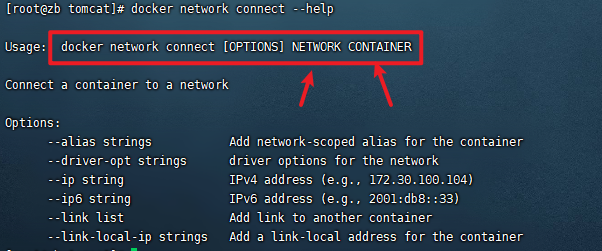
# Test and get through tomcat01 - mynet [root@zb tomcat]# docker network connect mynet tomcat01 # After connecting, tomcat01 is put under the mynet network # One container two ip addresses # It is similar to Alibaba cloud, a public network and a private network
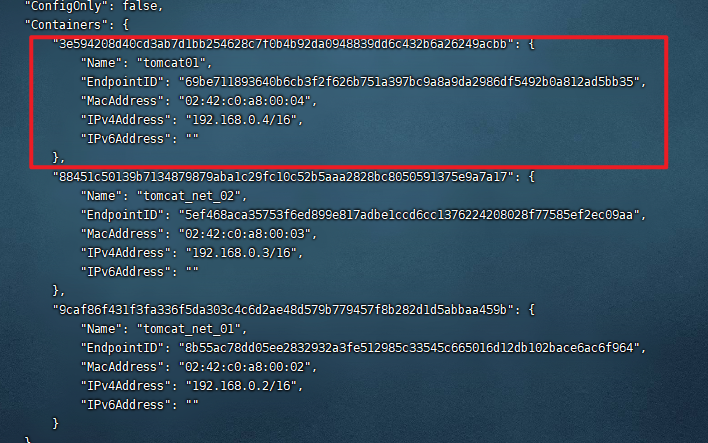
# 01 link ok [root@zb tomcat]# docker exec -it tomcat01 ping tomcat_net_01 PING tomcat_net_01 (192.168.0.2) 56(84) bytes of data. 64 bytes from tomcat_net_01.mynet (192.168.0.2): icmp_seq=1 ttl=64 time=0.069 ms 64 bytes from tomcat_net_01.mynet (192.168.0.2): icmp_seq=2 ttl=64 time=0.052 ms # 02 still can't get through [root@zb tomcat]# docker exec -it tomcat02 ping tomcat_net_01 ping: tomcat_net_01: Name or service not known
Conclusion: if you want to operate others across the network, you need to use docker net connect to connect
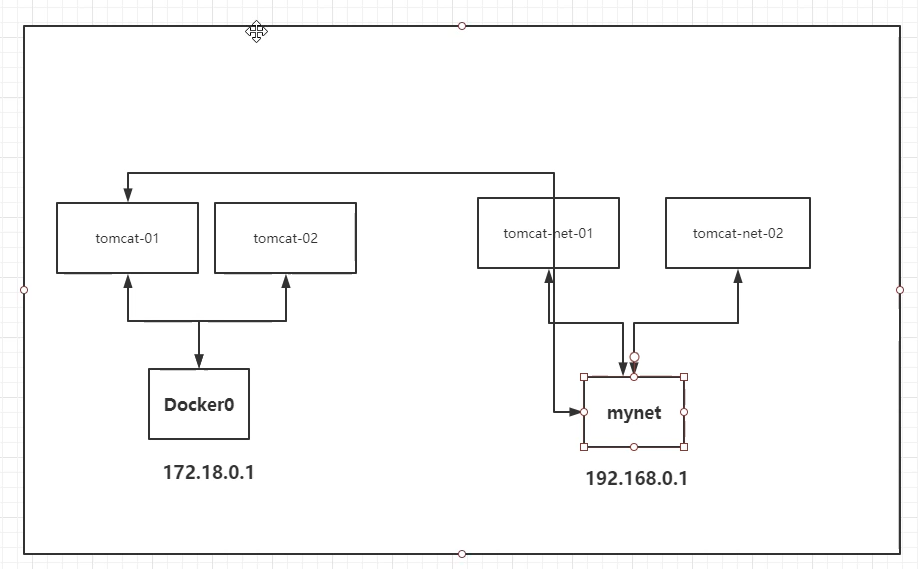
task
Docker installation Nginx
# 1. Search for images [root@zb home]# docker search nginx # 2. Download Image [root@zb home]# docker pull nginx # 3. Operation test [root@zb home]# docker run -d --name nginx01 -p 3389:80 nginx [root@zb home]# curl localhost:3389
Concept of port exposure
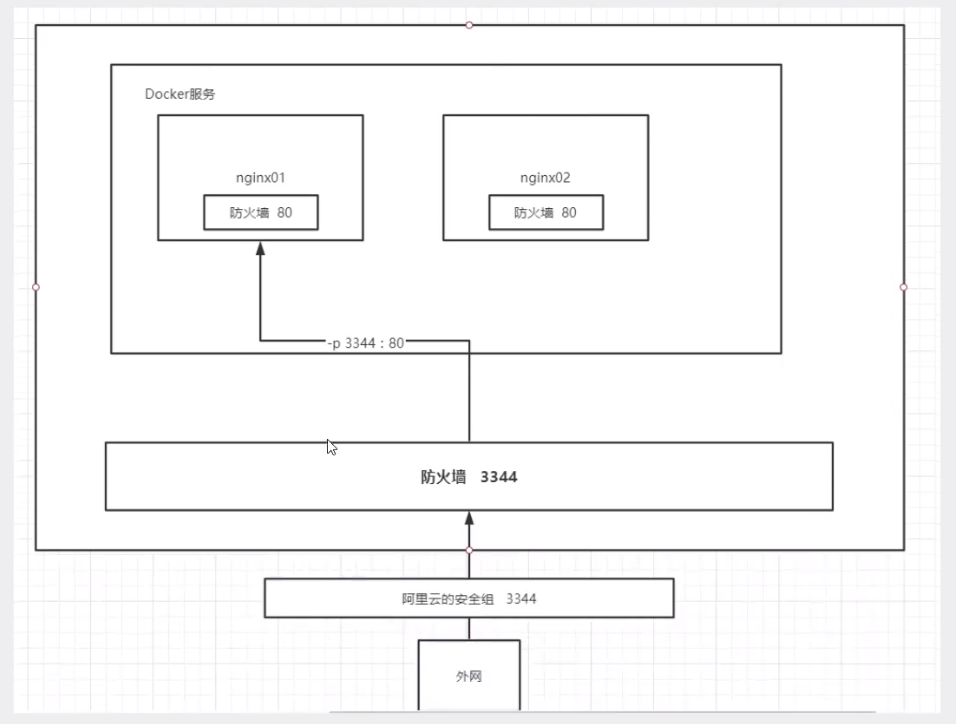
Docker installation tomacat
# Official use docker run -it --rm tomcat:9.0 # Before starting, the container was started in the background. After stopping the container, the container can still access it # docker run -it --rm, which is generally used for testing and deletion when used up # Download started at docker pull tomcat:9.0 # Start operation docker run -d -p 3355:8080 --name tomcat01 tomcat # There is no problem with the test access # Enter container [root@zb home]# docker exec -it tomcat01 /bin/bash # Problems found: 1. Lack of Linux commands 2. No webapps # Reason: the reason for alicloud image is the minimum image by default, and all unnecessary images are eliminated
Deploy es + kibana
# es exposes many ports # It's very memory intensive # The data of es generally needs to be placed in the security directory and mounted # Start elasticsearch docker run -d --name elasticsearch -p 9200:9200 -p 9300:9300 -e "discovery.type=single-node" elasticsearch:7.6.2 # Start linux is too laggy docker stats to see cpu's status. # Increase the memory limit and modify the configuration file -e environment configuration docker run -d --name elasticsearch02 -p 9200:9200 -p 9300:9300 -e "discovery.type=single-node" -e ES_JAVA_OPTS="-Xms64m -Xmx512m" elasticsearch:7.6.2
Use kinana to connect es? Think about the network if you can connect to the past
